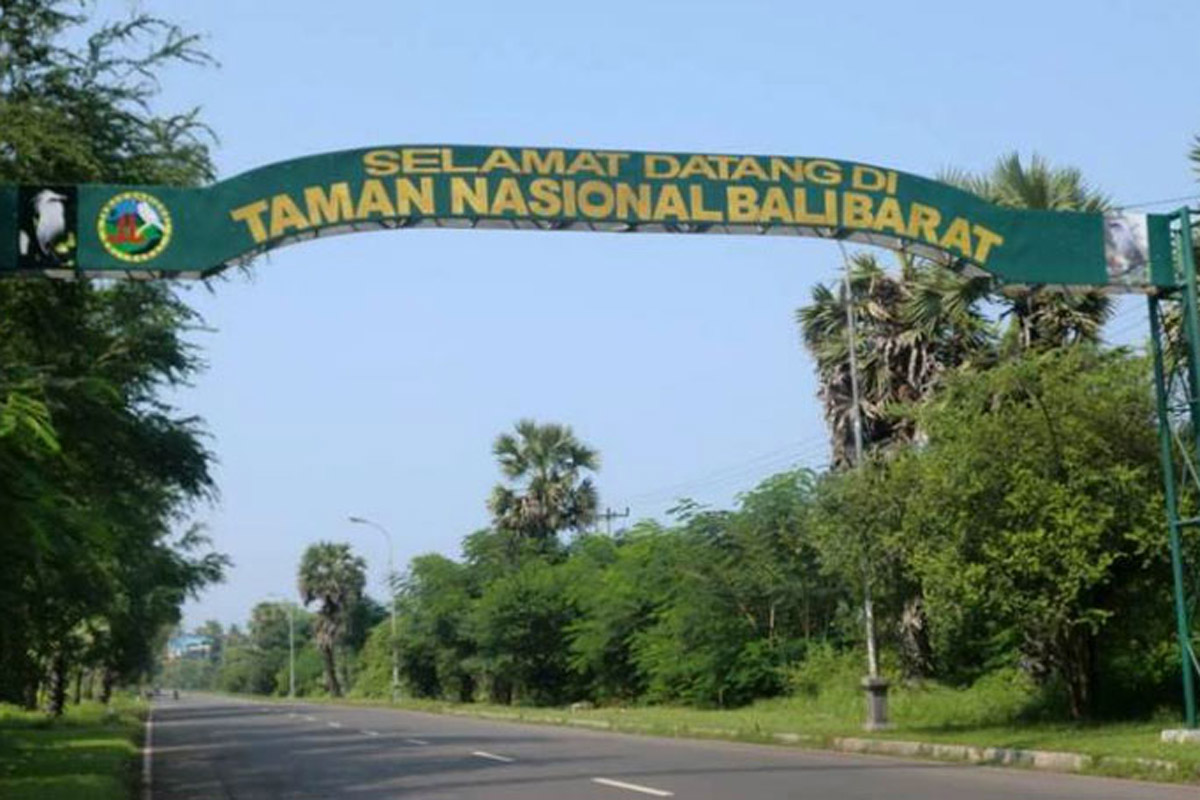
Overview
West Bali National Park (Taman Nasional Bali Barat in Bahasa Indonesia) is the most north-westerly point of Bali. It includes the whole of the Prapat Agung Peninsula, and large swathes of land around the towns of Gilimanuk, Cekik and Banyuwedang. The official area inside the park boundaries is 190 square kilometres, with a further 580 square kilometres of protected reserve in the highlands to the east. In total this accounts for some ten percent of Bali's total land area.
History
The park was first officially recognised as an area of importance in 1917 when the council of Bali rulers designated it as a nature park. It was fully established as an Indonesian National Park in 1941.

Landscape
The habitat is very varied with rainforest, dry savanna, acacia scrub and lowland forests, as well as more montane forests in the higher centre. There are also some pockets of dense mangrove forest.
In the north of the park there is an obvious north jutting peninsula called Prapat Agung. Around this peninsula there are long stretches of protected beach and offshore coral reef as well, as a small offshore island called Menjangan. The latter is a very popular diving destination.
There are several long extinct volcanoes in the protected reserve area to the east, with Mount Patas (1,412 metres) and Mount Merbuk (1,388 metres) being the highest points. These peaks are dominant visual landscape features from within every area of the park.

Flora and fauna
Bali Starling
One hundred and sixty species of bird have been recorded in the park, including the near extinct Bali Starling, Bali's only endemic vertebrate species, and a key reason why this national park was created in the first place. By 2001, as few as six individuals were thought to survive in the wild, all of them in this park. Since then captive breeding and re-introduction efforts have continued apace, but poaching pressures are a large problem. With that in mind, a seconf re-introduction programme was started in remote regions of Nusa Penida in 2004. Keen birdwatchers can find a checklist of likely species and their status here .
Mammals found inside the park include Banteng, a species of wild cattle from which the familiar Bali cows are descended. Java Rusa and Indian Muntjac deer are quite widespread, and Menjangan Island is in fact named after these (Menjangan means deer in Bahasa Indonesia). Wild Boar and Leopard Cats are both quite common but seldom encoutered.
A Bali Tiger (a full sub-species of Tiger) was shot here in 1937, and despite rumours to the contrary, that is the last ever confirmed sighting of an animal considered extinct since that moment.
Climate
Not noticeably different from the rest of Bali or eastern Java, but it may feel a little hotter and drier in the dry season here than in southern parts of Bali.
Bali is always warm, humid and tropical, remaining around 30-35°C (85-95°F) all year round. The April-October dry season and November-March rainy seasons are only relative, with plenty of rainfall around the year, but the Balinese winter is cloudier, more humid and with a higher chance of thunderstorms.
Bali Barat National Park Office HQ, Jl Raya Cekik-Gilimanuk, Jembrana, Bali 82253, ☎ +62 365 61060 (tnbb@telkom.net, fax: +62 365 61479), [2]. 7:30AM-5PM. edit
Bali Barat National Park Vistor's Centre, Labuhan Lalang,
Get in
Most visitors to the park arrive along the north coast road from Lovina (about 90 minutes) or Pemuteran (about 15 minutes). Others come from the south via Gilimanuk (about 15 minutes)
All visitors should check in at one of the two park offices (PHPA) for information, and to purchase permits and arrange guides. The headquarters is at the village of Cekik just south of the Gilimanuk in the west. The other is at Labuan Lalang on the north coast from where boats to Menjangan Island depart. The main ranger station is on the road between the two offices at Sumber Klampok.
The park staff are welcoming, helpful and will arrange guided tours for you. Most hotels in the area arrange guided tours, but if you want a more customized experience it is advisable to directly talk to the guides at the partk offices.
For example, Putu Arta in the Labuan Lalang office (+62 813 38399576) is an experienced and enthusiastic guide, who is happy to share his extensive knowledge of the flora and fauna of West Bali National Park with you.

Fees/Permits
Permits and obligatory guides are available at the park headquarters at Cekik and the office at Labuhan Lalang. The official permit charge is Rp 25,000 per person. The cost of a guide is negotiable. Use your common sense and do not be tight. Fees for the official guides have become fixed. at one office at 350,000 rupiah for a two hour hike. Official guides, however, will demand the official price (for foreigners) of 200,000 per person for a 3 hour hike (2013 rate). As of 15 July 2014 entry fees increased to Rp 200,000 for foreigners with additional surcharges depending on activity.
Get around
Only a small percentage of the total area of the park is open to visitors, and this rule must be respected. There are two key ways to explore the park: either hiking the trails or concentrating on marine aspects.
Walking the trails must be done with an official guide from one of the national park offices (most normally the one at Cekik). Boat trips to Menjangan and around Gilimanuk Bay can be organised in advance (ask at your hotel), or by charter on the day you arrive.
Persons expecting to wander through a tropical rain forest might be very disappointed with the hikes, as the trees are mostly deciduous, with a rather open ground cover.
See and do
The official park trails should be explored with a guide recommended by the national park ofice. This is actually a rule but it is sometimes 'quietly' ignored. Please do not do this nor encourage the practice, despite the very irresponsible advice given in some printed travel guides to do so.
The Tegal Blunder Trail is most popular with birdwatchers, and it is an easy two hour walk. The ranger checkpoint is at the village of Slumber Klampok about 20 minutes west of Cekik. From the same checkpoint you can take the more strenuous Gunung Klatakan Trail to the south east. This is tougher walking for about five hours, but it takes you through some memorable rainforest. There are other trails and opportunities for interesting hikes, but these are the two most popular and the easiest. Ask guides about other opportunities at the time, particularly those involving hiking deeper into the Prapat Agung Peninsula.
The uninhabited Menjangan Island is a must-do for any visitor to Bali interested in marine life, snorkelling or diving. Boats leave from the beach at Labuan Lalang at the northern edge of Teluk Terima bay, and can chartered on the day. Groups of tourists often club together at Labuan Lalang in the mornings for that very purpose. Any boat charter must be accompanied by a guide, and you must purchase a permit (Rp 25,000 per person) from the national park office in the main Labuhan Lalang car park. Many of Bali's dive operators based in the southern tourist regions offer dive excursions specifically to Menjangan. The snorkelling here is probably the best on Bali with good clear water and calm seas.
There is a notable temple on Menjangan called Puri Gili Kencana which is certainly worth a visit. You can walk around the whole of Menjangan in about 1 hour and 15 minutes. If you take it slower though there is plenty of natural coastal beauty to absorb.
Gilimanuk Bay snakes into the south western tip of the Prapat Agung peninsula, and the park office can arrange a guided boat trip for you in a traditional outrigger. Expect to pay about Rp 300,000 per hour including guide fees. The bay is quiet and supports a rich diverstity of marine life. There are some notable areas of mangrove forest fringing the bay, and these act as a natural nursery for the diverse fish life in the area.

Lodging
There is one official high end resort inside the boundaries of the national park on the Prapat Agung peninsula. There is no other accommodation inside the park. Visitors on a lower budget day trip the park from Gilimanuk, Pemuteran or Lovina where there are ranges of accommodation to suit all budgets.
There is popular budget accommodation about two km north of the Cekik park headquarters office on the road to Gilimanuk called Pondok Wisata Lestari, tel: +62 365 61504.
The Menjangan, ☎ +62 362 94700 (bliss@themenjangan.com). Member of Lifestyle Retreats, West Bali National Park.The Menjangan is the largest Resort with 382 hectares within the boundaries of the Bali Barat National Park. Offering 22 elegant rooms. The Monsoon Forest Lodge with 14 rooms set around an idyllic pool and Jacuzzi, 7 stunning Balinese Villas (100sqm) at the shores of your own private Balinese Beach. 1 Residence with private butler service (1,000 sqm) with two double bedrooms and one twin bedroom all with en-suite bathrooms and private balconies overlooking Bajul Bay, including a private infinity pool. Offering delicious and healthy cuisine in their two Restaurants, one directly on the Sentigi Beach. Lots of activities such as horse back riding, snorkeling, diving PADI Divecenter, bird watching, hiking tours, kayaking. Peaceful Spa Center offering great views from the four Gazebo treatment rooms. Free WiFi and 24-hours concierge service.
Waka Shorea, ☎ 62 361 484085 (info@wakaexperience.com). Just 16 rooms at this understated, five star resort which offers a full range of national park based activities. In-house spa, superb restaurant and everything else you would expect at a 5 star resort. Has a reception area adjacent to the public boat jetty at Labuhan Lalang, from where you jump into to a boat to reach the resort. The only accommodation inside the boundaries of the park. From US$185.
Mimpi Resort Mejangan, Banyuwedang, ☎ +62 362 94497 (menjangan@mimpi.com), [8]. The name is confusing as this five star hotel is not on Menjangan, but 3 km up the coast form the boat transit point on the mainland at Labuan Lalang. Fifty four rooms and top quality facilities including a pool fed by natural hot springs. US$100 for a room up to US$350 for the largest one bedroom villa.
Camping
Not permitted inside the national park, but there is a basic campsite at the park headquarters in Cekik. Facilities are limited but do include passable toilets and bathrooms. Bring your own camping gear. A small donation to the helpful (and underpaid) park staff is in order.
Backcountry
Nothing available inside the national park.
Stay safe
Bring plenty of water with you as you will dehydrate quickly.
Get out
If you are exploring the park via a base in the north west (Pemuteran or Lovina) then you may wish to continue your journey around Bali to the south and west via Gilimanuk. The reverse is of course also the case.








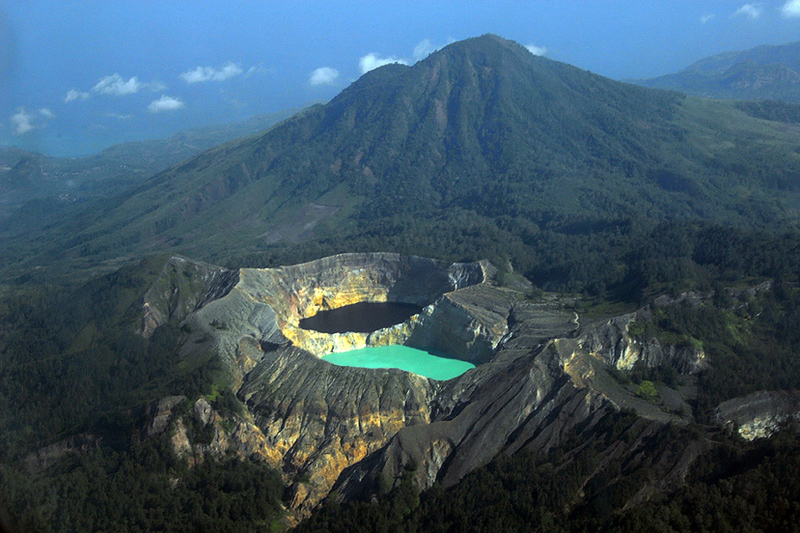


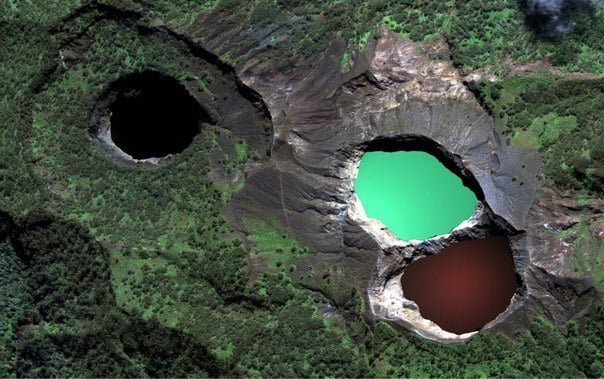




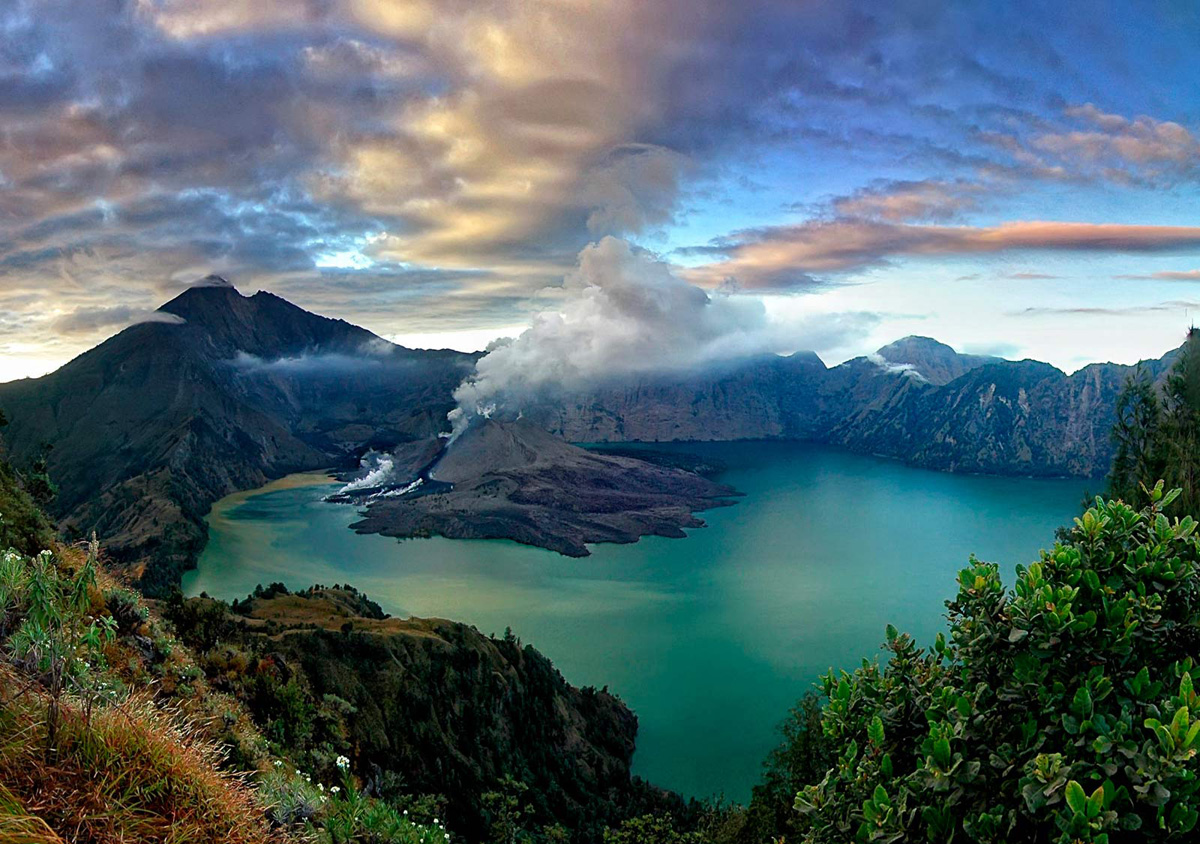 The mighty Rinjani mountain of Gunung Rinjani is a massive volcano which towers over the island of Lombok. A climb to the top is one of the most exhilarating experiences you can have in Indonesia. At 3,726 meters tall, Gunung Rinjani is the second highest mountain in Indonesia. The climb to the top may not be easy but it’s worth it, and is widely regarded as one of the best views in the country.
The mighty Rinjani mountain of Gunung Rinjani is a massive volcano which towers over the island of Lombok. A climb to the top is one of the most exhilarating experiences you can have in Indonesia. At 3,726 meters tall, Gunung Rinjani is the second highest mountain in Indonesia. The climb to the top may not be easy but it’s worth it, and is widely regarded as one of the best views in the country. 
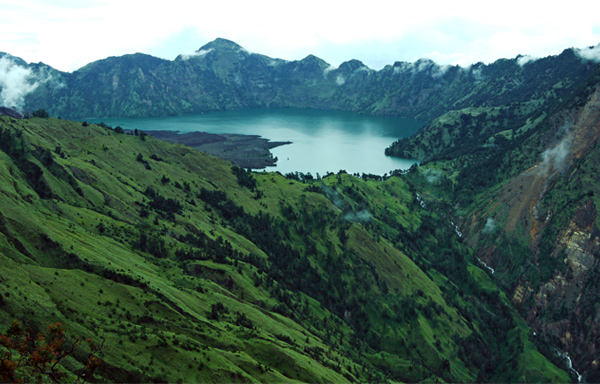
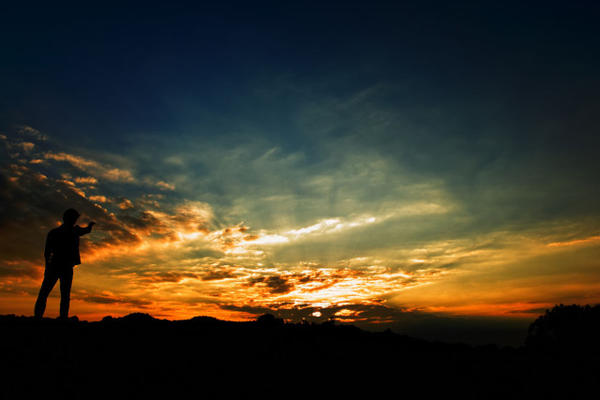
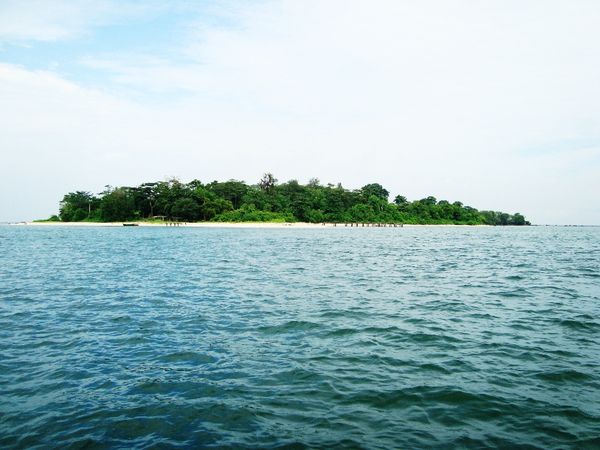






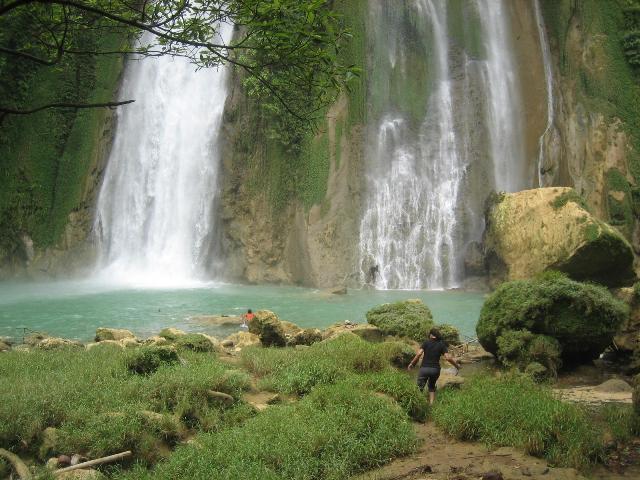

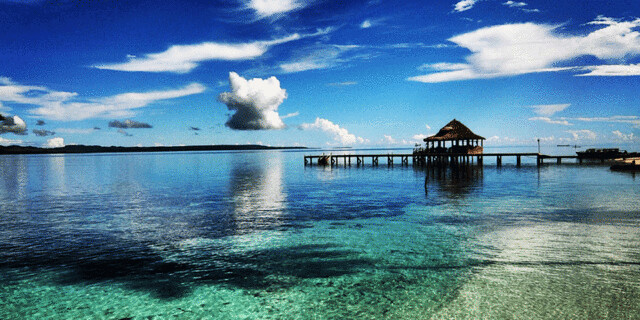



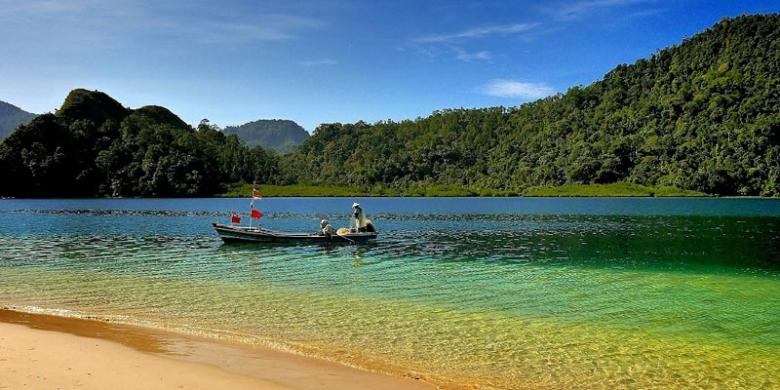
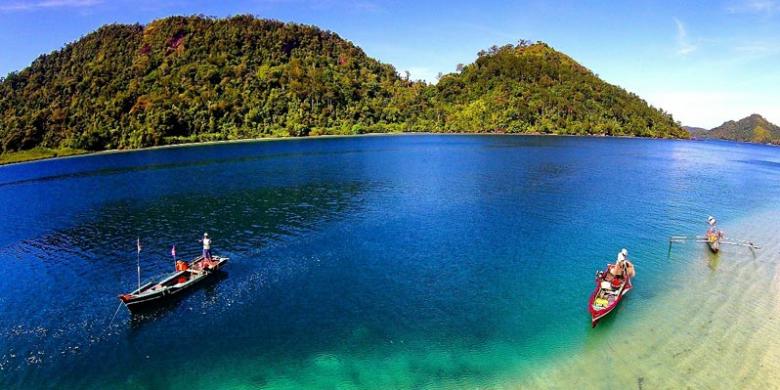
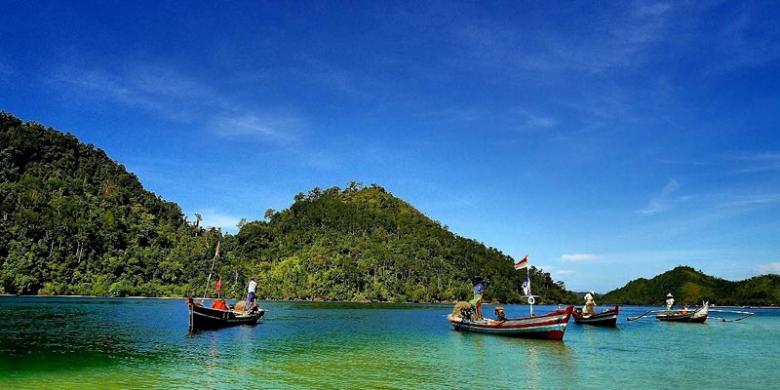






_medium.jpg)


































